Often home to candles, crystals, cauldrons, and many other magickal tools and sacred symbols, the altar is without a doubt one of the most well-known staples of Paganism and witchcraft. Though altars are by no means necessary to the craft, for many of us, they are nonetheless central to spiritual and magickal practice.
Used by all kinds of Pagans and witches for a variety of purposes, an altar is often a site of reverence for Gods and Goddesses, a centre for spellwork and the enactment of ritual, a meditation space, and a space for manifestation, among many other things. Most importantly, altars are often a representation of outer and inner realities—a reflection of self and the world in which we live. In this sense, an altar can be:
- A representation of spiritual practices and beliefs—revealing not only where you are in your spiritual journey now, but also where you’ve come from, and what you’ve learned along the way
- A physical expression of your hopes, dreams, and desires
- A tangible representation of your relationships and connections to people, places, and things
- A tiny glimpse into the order and chaos of the cosmos as you interpret it—a microcosmic representation of the macrocosm
While there is no right or wrong way to construct an altar, and no one definition of what an altar is or should mean, to me, it’s essentially a creative representation of the world as it is filtered through one’s consciousness, expressed through the arrangement of objects and symbols. Moreover, it is an outer reflection of inner worlds—a tangible expression of how we organize our understanding of the divine, the sacred, and our own magickal power.
There is an unfortunate tendency in many religions and spiritual traditions (particularly in those that stem from to Abrahamic and New Age practices) to separate spirit from matter—to see physical objects as empty things without significance or sacred relevance. But, as I wrote in my previous post on tools and correspondences in witchcraft, the physical world is not by any means devoid of meaning, and in fact can have much more of an effect on us than we might assume.
Just as we shape our spaces by filling them with things we find beautiful or significant, or that make us feel a certain way, so too do these things and spaces shape us. The connection between self and environment is a two-way relationship: what we choose to surround ourselves with influences how we think, feel, and even act. It follows, then, that what we select to place on our altars and use to decorate our sacred spaces genuinely matters to spiritual practice and development.
So, whether you’ve had an altar set up in your house for decades or you’ve never had one before, I’ve come up with a few tips and strategies to help you design (or redesign) your altar with intention and purpose.
What Makes an Altar Effective?
Although there is no one thing that makes an altar effective, and what works for one person is by no means guaranteed to work for another, there are a few general ideas that we can keep in mind when creating our altars to ensure that they are as spiritually powerful as they can be.
From my own experiences, as well as in learning from other Pagans and witches, I have found that generally, in ritual and magick, an effective altar:
- Encourages altered states of consciousness. When engaging in witchcraft and ritual, it is important to be able to shift one’s thought processes from linear, everyday rationality to immerse yourself instead in the intuitive and imaginative world of magick. Altered or magical states of consciousness are key to doing spellwork or stimulating spiritual experiences, so it is important to have an altar that helps you tap into this mindset.
- Engages the senses. As I wrote in my post on witchcraft and the body, stimulating one’s senses is a great way to foster altered and magical states of consciousness. Include evocative visuals, smells, and tastes as you set up your altar for ritual, such as powerful symbols, incense, sweet wines and delicious foods.
- Evokes emotion. Emotion is a key element of my practice, and many of my most powerful rituals and spell workings have also been the most emotional. Decorate your altar with objects, symbols, and images that you have a strong emotional tie to.
- Sparks imagination and creativity. I am of the belief that effective altars should be inspiring in some way. They should make you want to create something, whether it be a spell or a work of art (or both—art magick, anyone?). If an altar is a representation of the creative unfolding of the cosmos, then it should also be a reflection of the creative spark within you.
- Is aesthetically pleasing. Now, I’m not saying that your altar has to resemble one of those perfect, impossibly gorgeous altars we see so much of on social media these days, but it is true that if YOU like the way your altar looks, then you’re much more likely to want to use it on a regular basis. My own altar is a bit of a hodgepodge, not the most aesthetically pleasing of things, and probably won’t be considered “Instagram worthy” anytime soon—largely because I don’t have the money to throw at it right now. A lot of the items on it come from the dollar store or thrift shops. And that’s okay. What matters is that I find it beautiful. To me, my altar is absolutely stunning, and you bet that makes me want to spend as much time at it as I can.
- Has personal meaning. There are so many different ways to create an altar, and so many guides out there like this one telling you what to do and how to do it. While for some people, it is important to follow specific guidelines while constructing their altars (such as for Wiccans who adhere to a set traditional framework), for me the most important quality of an effective altar is that it is personally meaningful. While it can be helpful to take inspiration from tradition, I think it is so crucial that you really make your altar your own. Use these guidelines as a starting point, sure. But then find out what really works for you.
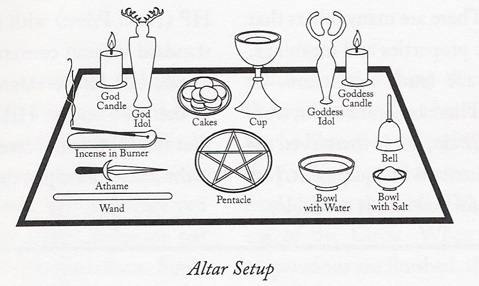
Three Key Questions to Ask Yourself
When planning your altar, there are three major questions you should first take into consideration:
1. Do I even want/need an altar?
Despite their prevalence in witchcraft and Paganism, you by no means need an altar to engage in ritual or practice magick. I know a few Pagans and witches who choose not to have an altar, as they understand that your mind and intention are really all you need. For some people, all that extra stuff really just gets in the way.
Consider your own practice: do you find tools, correspondences, and other materials to be helpful in your craft, or do you prefer to do your workings using only the power of your mind? If so, then perhaps you don’t really need an altar at all.
2. What kind of altar do I want/am able to have?
If you’ve decided that you do indeed wish to have an altar of some sort, the next step is determining what kind will work best for you. There are plenty of different types of altars, and what you have available to you, as well as the kind of space you live in will help determine what type is right for you.
For instance, think about whether you want a permanent altar that stays in one spot all the time, or a semi-permanent altar, that you can set up and take down as needed. A semi-permanent or temporary altar is especially good for people who don’t have a lot of space in their house to keep up a more permanent one, and for those who are still “in the broomcloset” and can’t openly have an altar set up in their home.
Also, if you travel a lot or enjoy doing your workings outside fairly regularly, consider creating a portable altar out of a box or suitcase that you can take with you and set up wherever you need to. I’ll likely be making one of these soon as the warmer weather sets in and I can do some of my rituals outdoors.
Additionally, consider things like what size you want your altar to be, and what you actually have room for, as well as whether you’d like to include lots of stuff on it, or if you’d prefer to keep it more minimalistic. Think about what suits you and your personal taste, as well as what is practical and feasible.
3. What is the intended purpose of my altar?
There are many different types of altars out there created for a variety of different purposes. For instance, some examples include:
- The traditional Wiccan altar: a practical altar for magickal workings and rituals with a specific layout based on honouring the sacred union between the God and Goddess
- The seasonal altar: designed to follow the Wheel of the Year, changing as the seasons do
- The ancestor altar: designed to honour your ancestors and the dead (particularly popular around Samhain)
- The deity/devotional altar: an altar dedicated to honouring and revering one or more deities
- The nature altar: similar to the seasonal altar, an altar specifically designed around the worship of nature
- The manifestation altar: an altar created for the particular purpose of manifesting something into your life (think of it like creating a kind of 3D vision board)
- The miscellaneous altar: a little bit of everything, and then some!
Obviously, you don’t need to stick to just one kind of altar. If you’re lucky enough to have the space, you could have a variety of different altars all designed for different purposes throughout your house. Alternatively, if you’re someone who likes to switch things up a lot, there’s certainly nothing wrong with having a seasonal altar one day and a devotional altar the next. It’s also important to note that these different types of altars are by no means rigid or static—their boundaries are fluid and mutable, and they often overlap and spill into one another.
Some Additional Questions
Once you’ve decided on what kind of altar you want, as well as what the particular purpose of this altar will be, there are some more secondary questions you might find helpful to ask yourself:
1. What aspects of my spiritual practice/beliefs do I want represented on this altar?
What kinds of objects, images, and symbols can you use to represent your own unique spiritual path? For instance, you might something include a pentacle to represent your Pagan path, a Buddha statue to remind you to stay present and mindful, and a cross to reflect your Christian upbringing. Not all of the imagery on your altar needs to be strictly Pagan or witchy—this is your personal sacred space, so go ahead and include whatever you want to, even if that means mixing religious traditions.
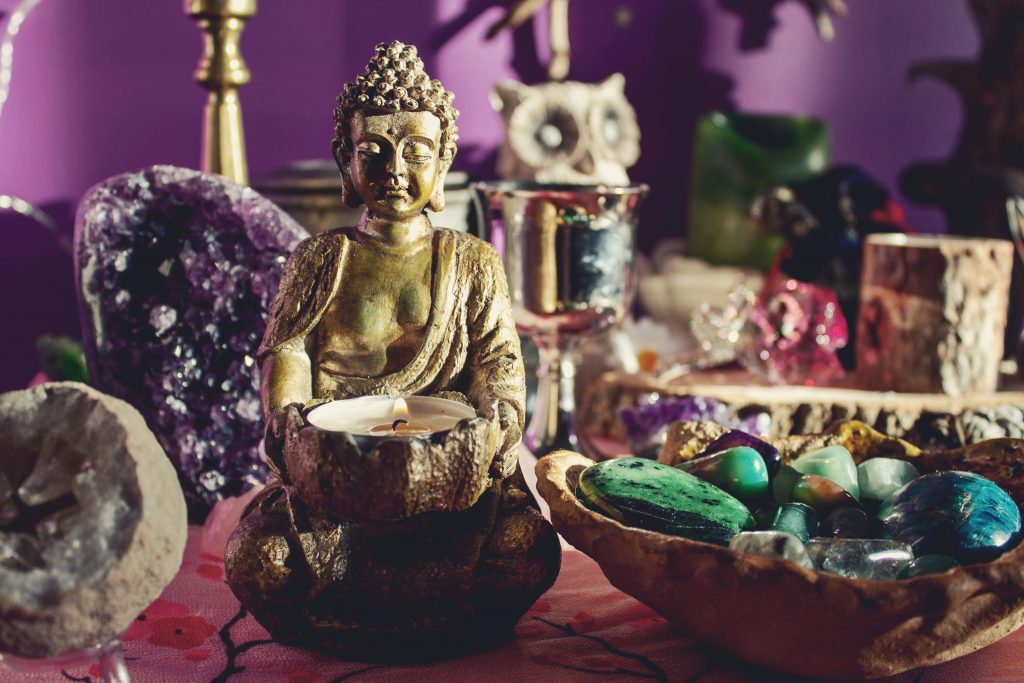
2. What symbols and objects hold particular meaning for me?
Reflect on why certain things are meaningful to you, and determine if this is something you would like to incorporate into your spiritual practice, or if it is in alignment with what you want your altar to represent.
3. What colours feel right to include?
Consider what colours you find yourself drawn to and why, and decide what kind of colour scheme you want your altar to have. Does the idea of an altar adorned primarily with shades of white and grey seem appealing to you, or would you rather it be more of an explosion of colour? (Similarly, if colour magick is your thing, you might want to take some of that into account).
4. What tools and correspondences do I regularly use in ritual and magick?
What kinds of things do you usually incorporate into your practice, or if you’re just starting out, what would you like to incorporate? If there are particular staples in your practice that stand out, you might want to consider including them on your altar (partially for ease of access). For instance, if you use rosemary a lot, you might want to have a vial of it ready to go on your altar, along with other herbs, crystals, and tools you regularly reach for.
5. What do I already have?
Though it’s certainly tempting to go out and buy all sorts of pretty bits for your altar, particularly when you’re first starting out, it really makes more sense to first look around your house and see what you already have that you could include. Don’t feel that you need to have everything that you want for your altar right away. I guarantee that you’ll collect more things over time as your practice develops, and it’s very likely that you’ll find as your witchcraft evolves, so too will the things that you want to have on your altar. My advice to you is to let your sacred space grow organically along with your practice.
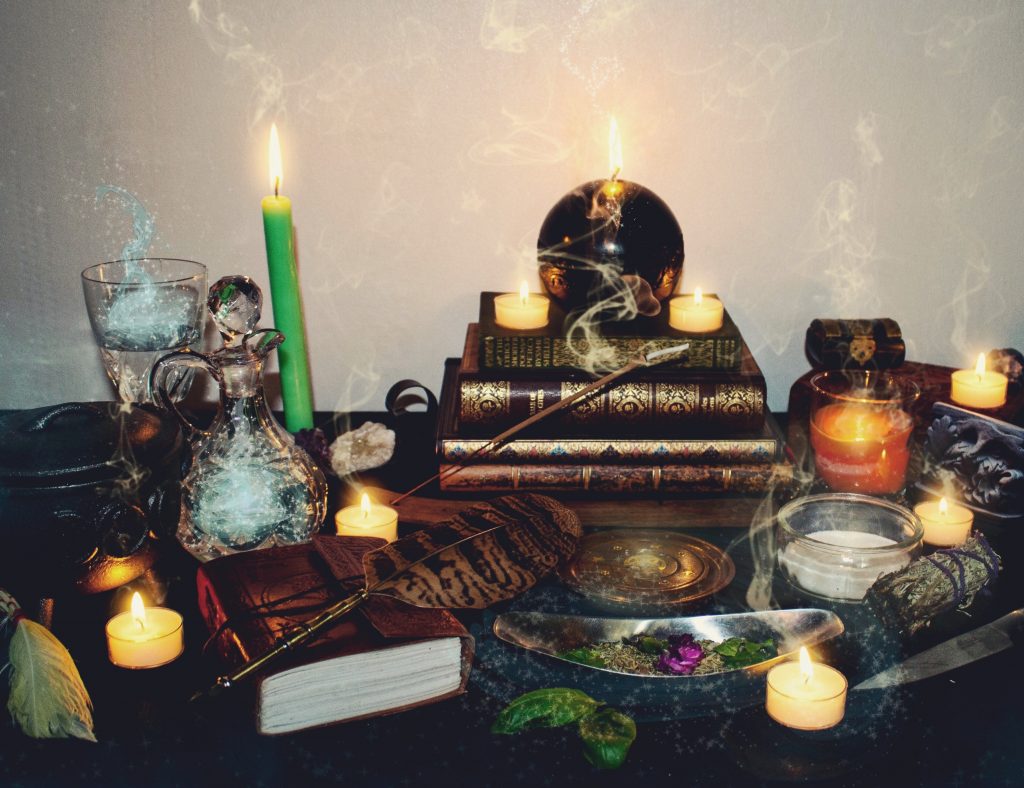
6. What’s worked for me before?
If this isn’t your first time using an altar, then think about what they’ve looked like in the past—particularly what worked and what didn’t. If you find that the opposition of the God and Goddess just doesn’t do it for you, then scrap it and replace it with something that does. A great tip is to keep a visual record (photographs or drawings) of all the various incarnations of your altar in a Book of Shadows or any other journal. That way, you can see how it’s changed over time, and make note of certain patterns that emerge. If there are certain elements or structures that keep showing up time and time again, then it’s a safe bet to say that these are probably things that work for you. Plus, it’s also just really fun to be able to look back on how your altar has changed over time!
7. What is my intuition telling me?
Sometimes, when I’m in the process of redesigning my altar, I’ll put something on it and have no idea why. Often, it won’t be until later when I’m actually in ritual and really immersed within that altered/ magical state of consciousness that I’ll realize its meaning and recognize its importance. Sometimes, powerful connections that emerge from deep within the unconscious are not immediately clear to the conscious mind, and we must first shift our mode of perception in order to fully understand them. So, don’t be afraid to listen to your intuition when you’re putting together your altar, even if it means including things without really knowing why. Mystery is, after all, one of the greatest things about magick!
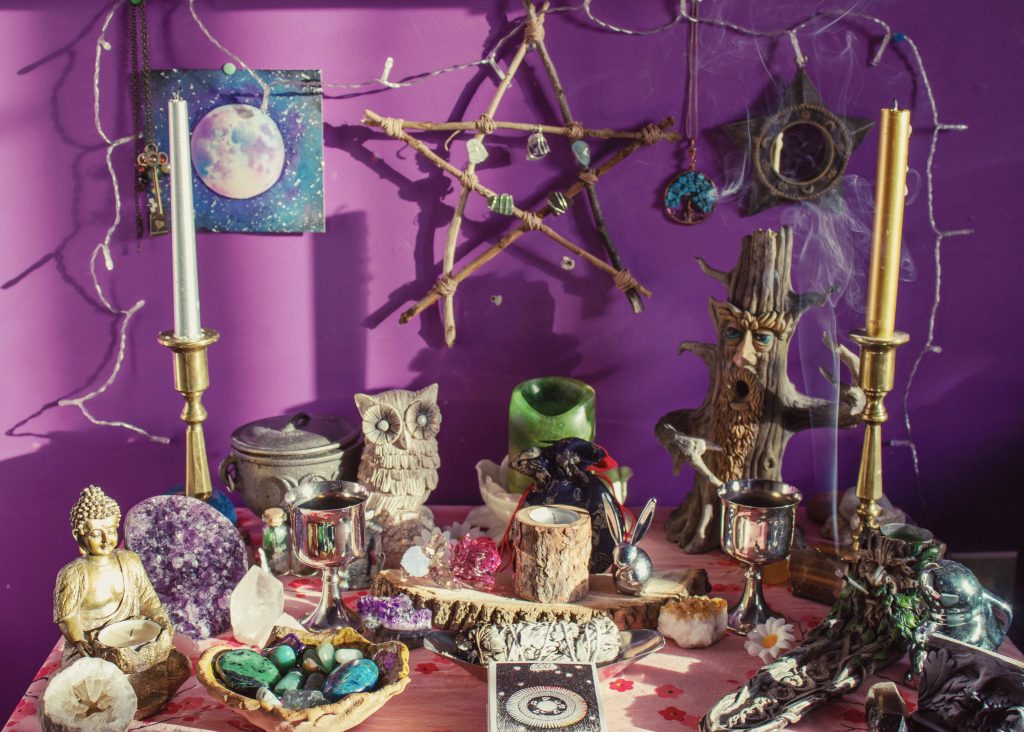
So, there you have it: my main tips for creating an altar that is not only meaningful, but that has the potential to further empower your magick and spiritual practice.
Check out part two of this post, where I give you some of my favourite ideas for non-Wiccan (and slightly untraditional) things to include on your altar!
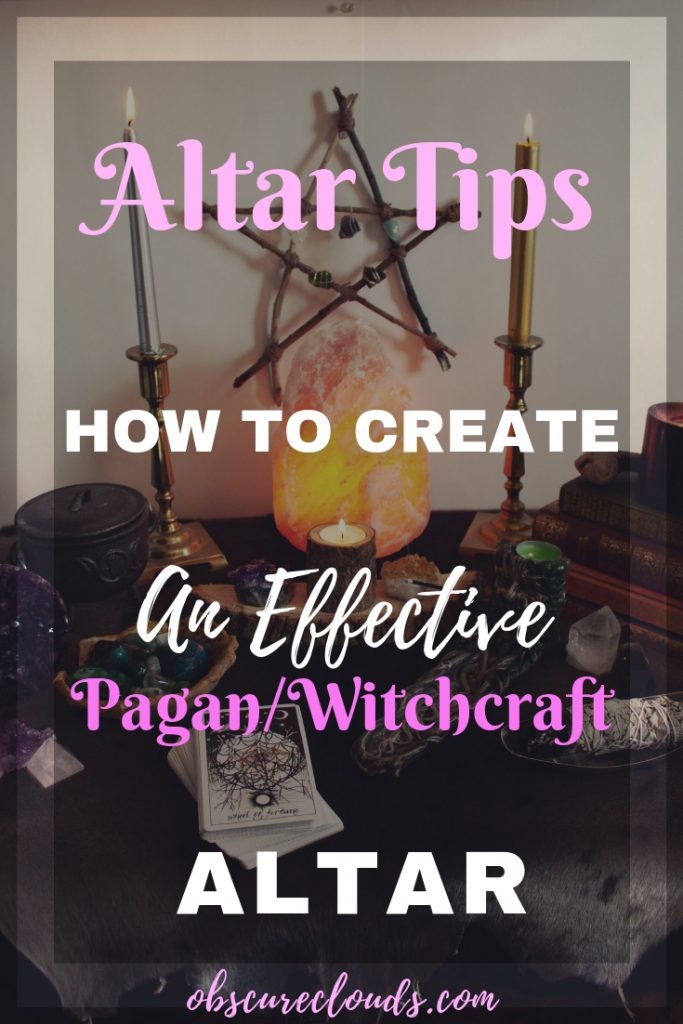

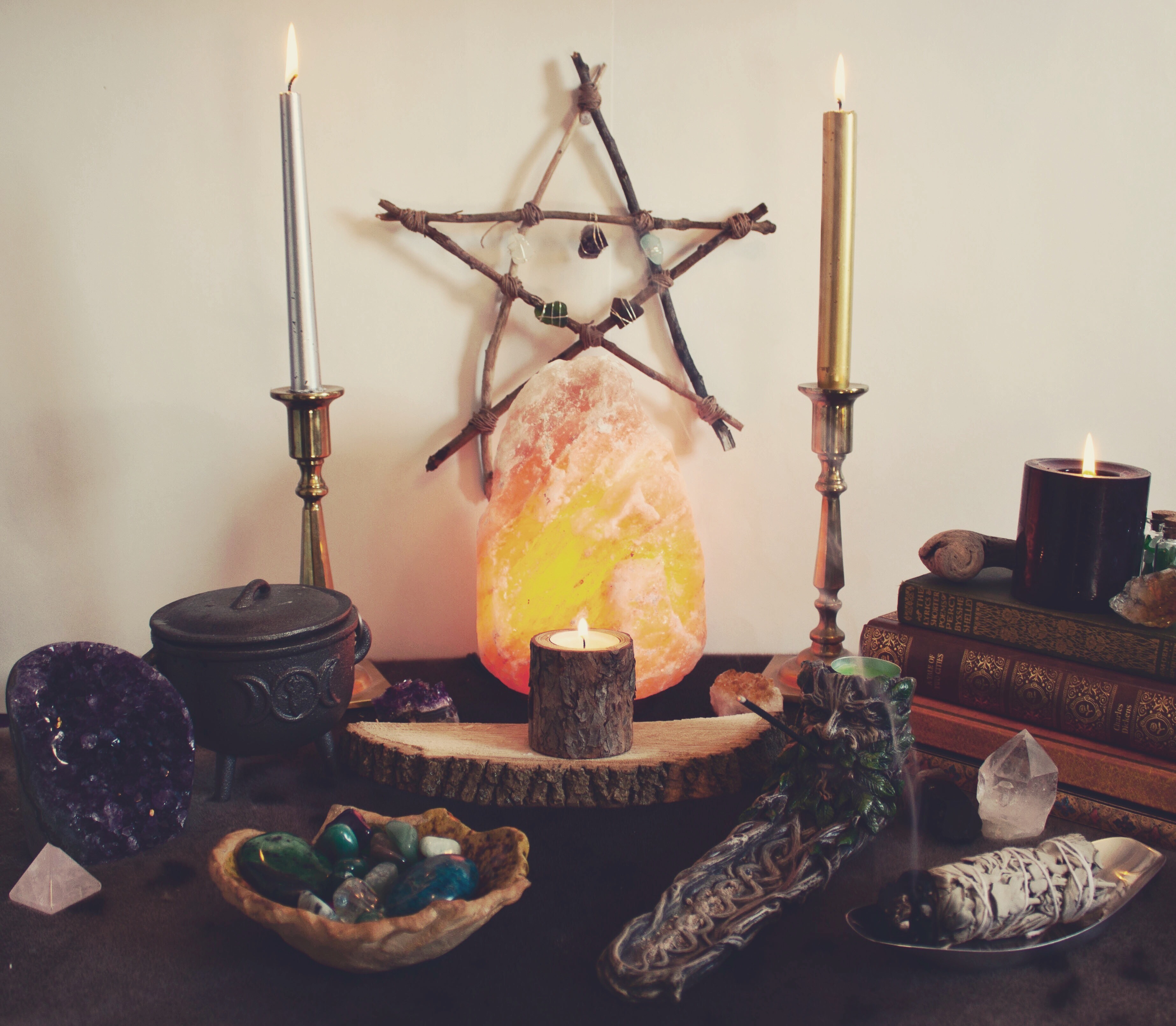

Thank you so much for this! It has clarified things that have been circling in my head for a while.
That’s great to hear! I’m glad you found it helpful 😊